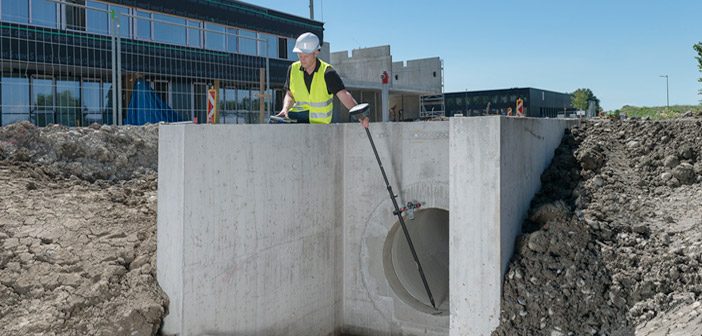
Since its launch, the revolutionary new Leica GS18 T has been making headlines around the world as the greatest innovation for surveyors for years. Here in New Zealand, the geomatics team at Global Survey have been busy with demand for demos from new and existing customers.
The new self-calibrating Leica GS18 T with full tilt compensation and immunity from magnetic disturbances has been very well received. It’s fair to say that everyone who’s demo’d one has been extremely impressed, it’s that good.
As with all new technologies there are a few commonly asked questions which we aim to answer here:
Q. How much faster is the Leica GS18 T?
A. Leica’s research says the GS18 T is 20% faster. Depending on the type of application and conditions, we believe this is a conservative estimate of the increase in productivity you can expect.
Q. Can the Leica GS18 T be used for setting out?
A. Yes definitely and the same 20% productivity gain would be achievable here.
Q. How easy is it to learn?
A. Whether you’ve used a Leica receiver before or not the Leica GS18 T and Captivate software have been designed to be intuitive and easy to use. Our team provide comprehensive training and are on hand for support.
Watch this video for how to use the GS18 T:
Q. What extra information does a Leica GS18 T record?
A. The GS18 T stores 3 additional QA/QC values in relation to the tilt.
- The amount of tilt (angular)
- The tilt direction (the angular amount from north)
- The sensor heading (the direction that the sensor is facing – image shows the pole is not tilted as you rotate the GNSS around the point the heading will change)
Q. Can you correct the pole height if it has been inaccurately entered?
A. YES – Infinity can compensate for this change and correctly alter the height and position.
Q. Will it hold the elevation mask when tilted?
A. Yes, the receiver always knows if the satellites is below the elevation mask irrespective of it’s tilt.
Q. Will it increase the multipath when tilted?
A. No, the errors will not increase.

Q. Why don’t you need to calibrate the unit?
A. It is self calibrating through an integration between the GNSS working in conjunction with the IMUs.
Q. How is it immune to magnetic disturbance?
A. The GS18 T utilises the lastest IMU technology that is not based on a magnetometer, therefore it is not disturbed by metal objects and can be used in close proximity to common items on construction sites, vehicles and street assets etc.
Q. Why do I only need a single reading with the GS18 T?
A. Extensive research has been conducted on why only a single reading is necessary.
We have found that using conventional sensors, many users measure several RTK positions (epochs) on each point, even when measuring topo points. This means that they press Measure,
and then wait on the point until the required number of RTK positions has counted up, before the system stores the point.
This has the advantage of giving a more accurate point position, since the multiple recorded epochs average out the bubble error caused by user moving the pole slightly trying to center the bubble.
Many users measure multiple epochs over 5 seconds, which means waiting on each point at least 5 seconds before being able to move on.
There is no other advantage in measuring multiple epochs over several seconds. It does not increase the GNSS positioning accuracy as over such a short time there is no significant change of the atmosphere or satellite geometry, therefore the most significant errors will not vary and will not be reduced. Measuring multiple epochs only becomes an advantage when a single point is occupied over a 10-20 minute time span.
With the Leica GS18 T the need for averaging out this bubble error is eliminated, as the tilt of the pole is constantly measured. Therefore a point can be measured at any moment by pressing Measure and it will be stored instantaneously, meaning the user can quickly move on to the next point.
Do you have a question not answered here? Keen to try the fastest GNSS rover for yourself?
Email us or call our expert team on 0800 453 422
SHARE THIS ARTICLE


